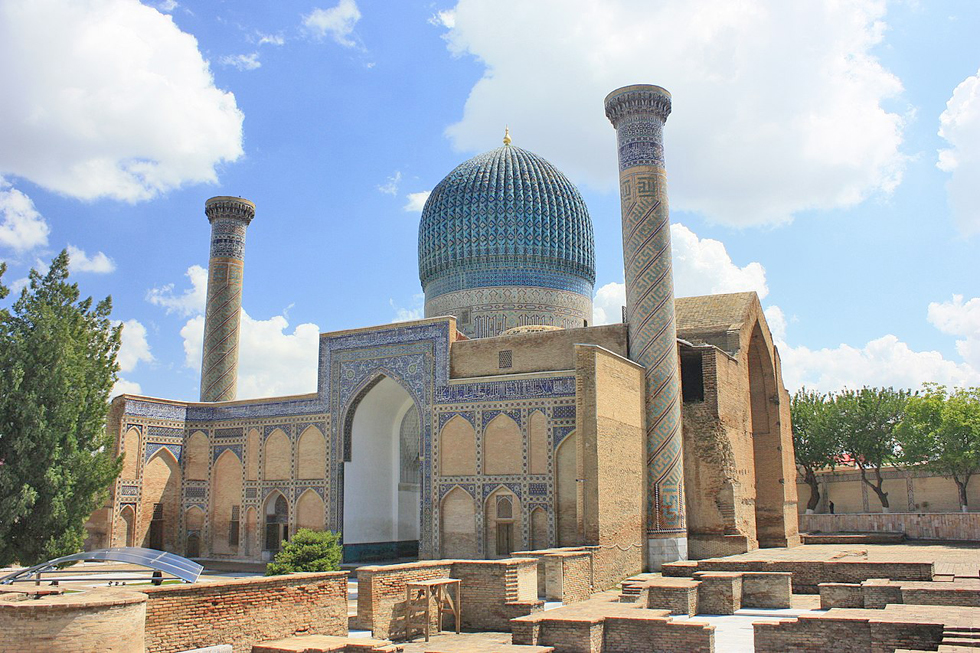The Gur-Emir mausoleum in the Uzbek city of Samarqand is the tomb of the conqueror Timur Lenk ,also known as Tamerlane. some members of his family and other personalities from the Environment of the ruler, including Ulug Beg, Schah-Ruch and Mir Said Berke.
The construction of the building, which was initiated in 1399 by Mohammed Sultan Mirza, who was appointed as the crown prince, was continued by Timur in 1404 after the death of Mohammed Sultan Mirza and was completed in January 1405. Timur, who died on February 18, 1405, shortly after its completion, was buried in this structure. After this date, the complex was called Gur-i Emir.
The tomb became the family cemetery of the Timurids and important members of the dynasty were buried in this tomb. In the tomb, one of Timur’s grandchildren, Muhammed Sultan Mirza, Pir Muhammed Mirza, Uluğ Bey and Timur’s sons Miranşah Mirza and Şahruh Mirza were buried. The only person who is not a dynasty in the tomb is Seyyid Bereke, who was Timur’s teacher.
The mausoleum appears as a large, richly decorated high room with deep niches on the sides. The lower part of the walls is covered by onyx slabs composed of one piece. Each of these slabs is decorated with refined paintings. Above these panels runs a cornice of marble mocárabes. The walls are decorated with painted plaster. The vaults and the interior dome are decorated with papier-mâché cartridges, painted and gilded.
Gur-e-Amir considered the most outstanding example of the special construction of a double-skinned dome developed under the Timurids. The melon-shaped ribbed dome of the mausoleum over a high drum forms the dominant center of the complex.
Access : Coordinates: 39.648333, 66.968889 / Address: Shohruh Mirzo St., Samarkand.
Highlights :
- The architecture of Gur-e-Amir summarizes the experience of creative searches of many generations of architects of the Middle East. At the same time, the appearance of the mausoleum especially clearly and completely expressed the artistic tendencies of its time: solemn monumentality and decorative entertainment. Central Asian architecture of the late XIV – early XV centuries. closely interacted and had a great influence on the architecture of neighboring countries.
- It is believed that this stone was once the throne of Kabeh Khan, a descendant of the famous Genghis Khan. The tombstone of Amir Timur is distinguished by an ominous warning inscription: “Anyone who breaks my peace in this life or in the next will be subjected to suffering and perish.”
- The crypt : Below the main room there is a crypt with a flat brick vault, in which the actual tombs are also located. The crypt is accessible via an entrance outside the mausoleum.
- Some researchers believe that the majestic mausoleum of Tamerlane served as the prototype for two other architectural masterpieces – the Humayun mausoleum in Delhi and the Taj Mahal in Agra. They were built by the dynasty of the Great Mughals, the descendants of Timur.
- In 2014, by the decision of the Interparliamentary Assembly of the CIS member states, it was included in the list of attractions “Pearls of the Commonwealth”.
Go next : There are two more small mausoleums next to the Gur-e-Amir complex ,the Rukhabad mausoleum and the Aksaray mausoleum. / Registan , the historic main square of the Samarkand.

